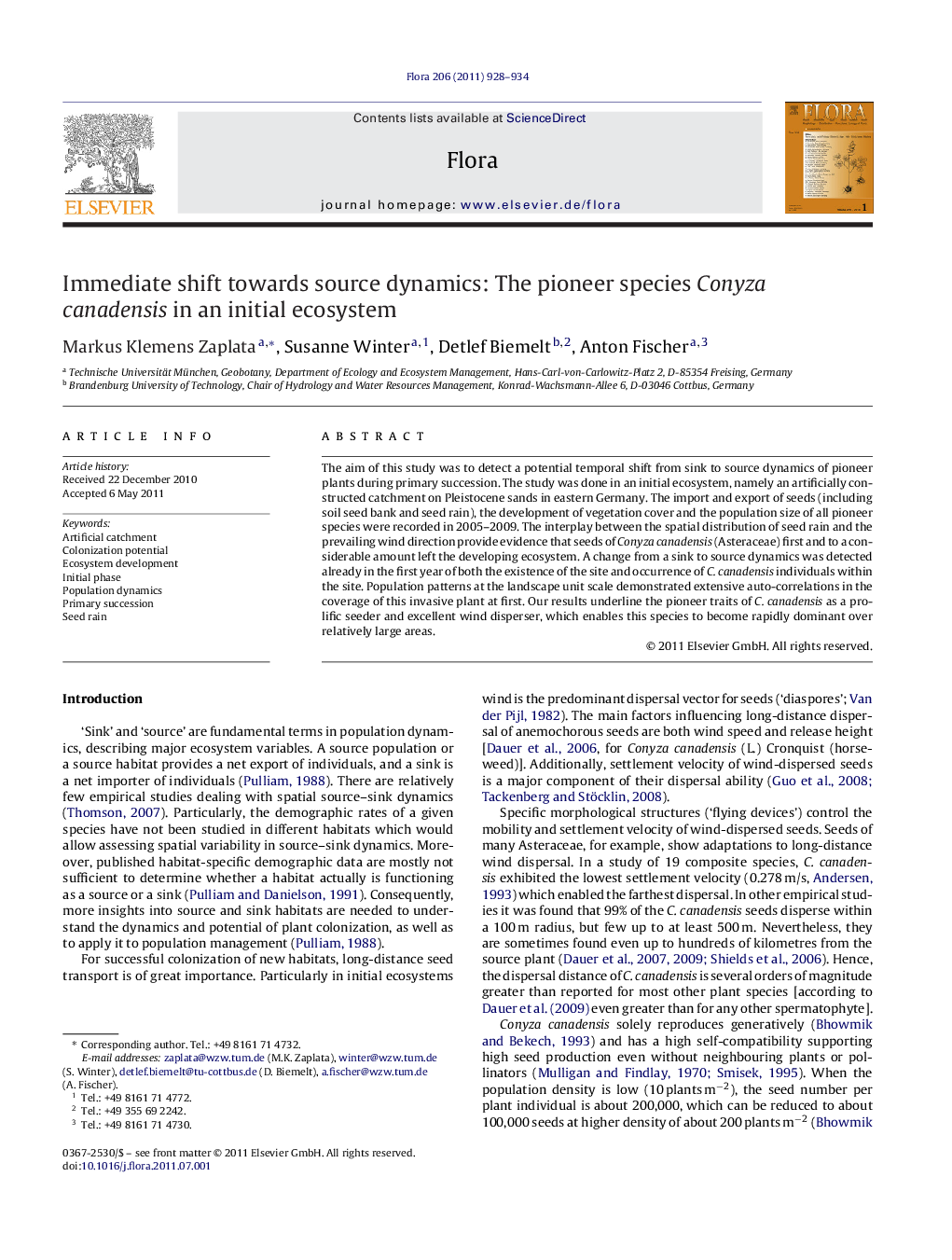| Article ID | Journal | Published Year | Pages | File Type |
|---|---|---|---|---|
| 2179796 | Flora - Morphology, Distribution, Functional Ecology of Plants | 2011 | 7 Pages |
The aim of this study was to detect a potential temporal shift from sink to source dynamics of pioneer plants during primary succession. The study was done in an initial ecosystem, namely an artificially constructed catchment on Pleistocene sands in eastern Germany. The import and export of seeds (including soil seed bank and seed rain), the development of vegetation cover and the population size of all pioneer species were recorded in 2005–2009. The interplay between the spatial distribution of seed rain and the prevailing wind direction provide evidence that seeds of Conyza canadensis (Asteraceae) first and to a considerable amount left the developing ecosystem. A change from a sink to source dynamics was detected already in the first year of both the existence of the site and occurrence of C. canadensis individuals within the site. Population patterns at the landscape unit scale demonstrated extensive auto-correlations in the coverage of this invasive plant at first. Our results underline the pioneer traits of C. canadensis as a prolific seeder and excellent wind disperser, which enables this species to become rapidly dominant over relatively large areas.
